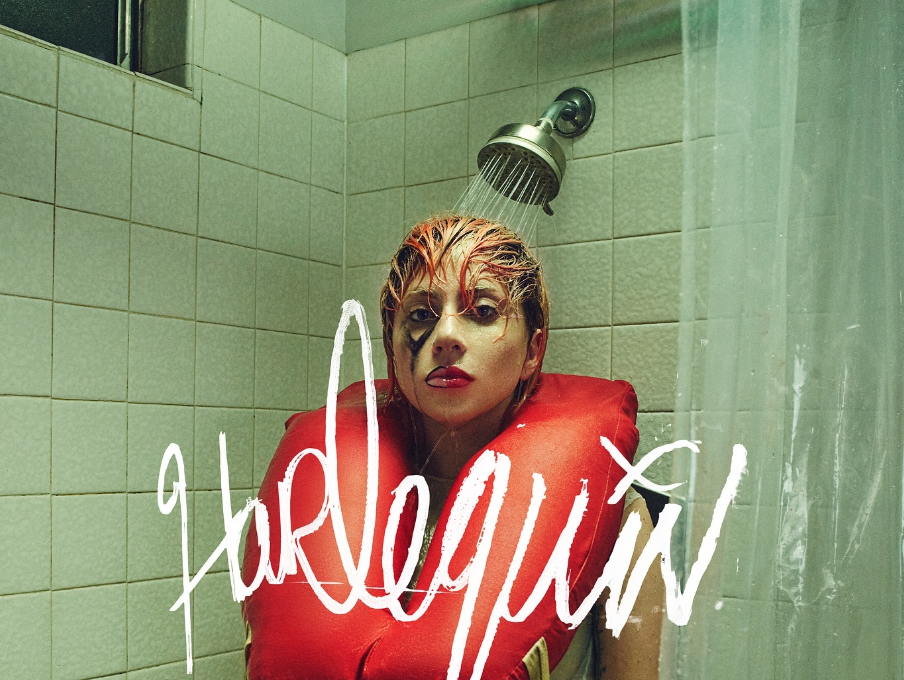
Music Contributor Sophie Webb reviews Lady Gaga’s newest album Harlequin, a complementary album to her new film Joker: Folie à Deux
With little fanfare or promotion, Lady Gaga released the surprise cover album Harlequin (2024) as a companion piece to her upcoming film Joker: Folie á Deux, in which she plays Harleen “Lee” Quinzel, as the album’s title would suggest. I’m yet to see this film and perhaps a second listening to the album after doing so will provide a new perspective; in the meantime, listening without the context of the film makes it the latest entry in Lady Gaga’s extensive and varied discography, rather than purely a film tie-in.
When Gaga first emerged into the dance world in 2008 (The Fame), it was as if she had always been there. Via operatic rock (Born This Way, 2011), an experiment in alternative electronica (ARTPOP, 2014), jazz with Tony Bennett (2014, 2021) and the largely acoustic Joanne (2016), she came full circle with 2020’s cyberpunk Chromatica.
Just as famous, if not more, than Gaga’s music was her flamboyant public image: a boldness somewhat belied by her raw, biting lyrics about the way she moves through the world. Going into Harlequin, I was unsure of whether to expect a version of Gaga recognisable from the past, or another re-invention. After all, nowadays she is better known for her Oscar win and nominations.
Going into Harlequin, I was unsure of whether to expect a version of Gaga recognisable from the past, or another re-invention
Much of Harlequin’s covers are classic showtunes, modernised and yet enduring in their hallmarks of Old Hollywood. The album opens with ‘Good Morning’, a jazzy interpretation of the sunny ‘Singin’ in The Rain’ tune, in which Gaga borrows from her experiences with Tony Bennett. However, she is straight out of the gate with Joker twists: the lyric ‘neighbours’ is replaced by ‘inmates’. While this change ties directly into the film that the album was built to promote, it also happens to be congruent with Gaga’s signature recipe of graphic lyricism married to upbeat musicality.
In ‘Get Happy’, Gaga is re-imagined as the troubled Hollywood star Judy Garland, and she embodies Garland’s deep, sonorous voice with ease. ‘If My Friends Could See Me Now’, ‘That’s Entertainment’ and ‘That’s Life’ follow the same formula, solidifying Gaga’s jazz interests as not simply an experiment, but something that she wishes to assimilate into her mainstream identity. This could well be an effect of the Oscar win.
‘Smile’ is a personal highlight of the album with its echoing, spectral trumpets, where Gaga’s brazen musical theatre voice is toned down to a whisper. ‘The Joker’ is the most reminiscent of Gaga’s pop rock origins, while ‘Folie à Deux’ is lilting and mischievous, evoking the two lead characters from the film of the same name, twirling in a shared madness. ‘Happy Mistake’ is another highlight, sounding like a relic of Joanne – an intoxicating blend of sweet soprano and mournful acoustic guitar. Gaga, as ever, sings in defiance: in ‘If My Friends Could See Me Now’, the lyrics imply a comeback of sorts: ‘They’ll never believe it / if my friends could see me now / take a look at me now’. The character Gaga embodies, whether it’s herself or Harley Quinn, has overcome adversity. Throughout the album are these suggestions of unseen depths which Gaga’s confident, theatrical vocals work to conceal.
it remains difficult to tell whether these soulful covers are from within Gaga’s heart as a musician, or whether they were devised as marketing for the film
The album is short and earnestly presented, but it remains difficult to tell whether these soulful covers are from within Gaga’s heart as a musician, or whether they were devised as marketing for the film. Is Gaga roleplaying as a fictional character, rather than presenting her authentic self? Is this artistic tactic unique to this album, or does she appear to do the same in past works such as The Fame Monster and ARTPOP? The album leaves these questions unanswered, perhaps to a positive effect: the movie remains the centrepiece of the album, and not Gaga herself. Your overall enjoyment of the album will depend on your appreciation for musical theatre and classical showtunes, yet the songs are undeniable in their portrayal of a character, fictional or otherwise, who lives behind a veneer of flamboyance. We get the sense that this character harbours a much more vulnerable persona underneath – as Gaga has done in the past, to star-making effect.
Rating: 8/10
Read more:
Live Preview: Wallows | Redbrick Music
Comments